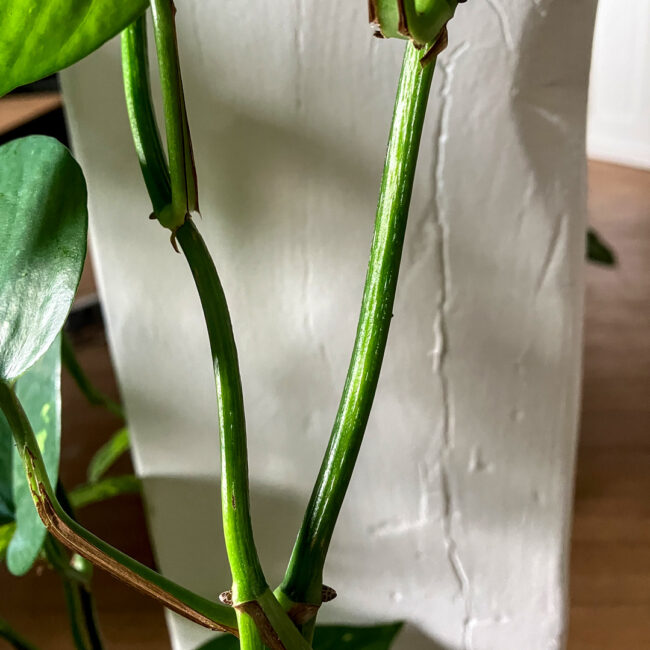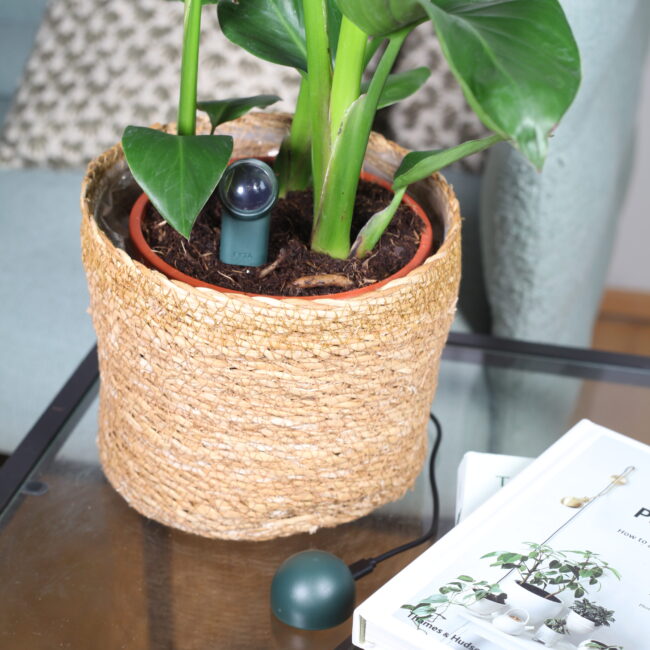


You water regularly, choose the right fertilizer, maybe even talk to your plant – and yet it still doesn’t seem to thrive? Leaves look pale, stems are weak, new growth is small or doesn’t appear at all. The reason is often not a lack of water or nutrients. It’s the light. Or more precisely: the lack of it.
Light is to plants what food is to us. It doesn’t just support them with energy – it is the energy. Without light, there is no photosynthesis. Without photosynthesis, there are no new cells, no growth, no structural integrity. One commonly used comparison sums it up well:
Light is basic nutrition.
Fertilizer is a supplement.
So if you focus only on watering and fertilizing, you may be neglecting your plant’s most essential need. A common mistake – and one that’s hard to detect with the naked eye.

Our eyes adapt to changing light conditions. A room that seems “bright enough” to us may already be too dark for a plant. Because plants measure light differently. What matters is not how bright a space looks, but how much photosynthetically active radiation (PAR) actually reaches the leaves. And that depends on a number of easily overlooked factors:
Direction the window faces and its size
Time of day and time of year
Cloud cover, nearby buildings, curtains
Distance from the light source
A north-facing window might be ideal in summer – but the same spot often becomes insufficient in winter.

Plants respond to insufficient light with a number of clear, though often misinterpreted, symptoms:
Leaves lose color or drop
New shoots are long and thin (etiolation)
Growth slows or stops completely
Plants become more vulnerable to pests and diseases
These signs are often mistaken for underwatering, improper care, or nutrient deficiency. But in many cases, the true issue is location.
Botanist David Lee, known for his work on plant physiology, describes light as the “architectural foundation” of every plant. Shape, color, and growth behavior are directly dependent on light availability. Plant biologist Dr. Ulrike Bauer from the University of Bristol adds that plants in low-light conditions don’t just grow more slowly – they grow fundamentally differently. Light doesn’t just determine if a plant grows, but how it grows.

With the FYTA Beam, you can accurately measure your plant’s light conditions for the first time – not based on guesswork, but on real data. The sensor measures in real time:
The total amount of light over 24 hours
The intensity and duration of available light
A comparison to your plant’s actual light requirements
In live mode, you can even test multiple spots instantly. You’ll see right away whether the window sill is better than the bookshelf halfway across the room. It saves time – and frustration.
Enough light means more photosynthesis, more energy, more substance. Leaves become stronger, colors more vibrant, stems more stable. With the right location, your plant changes – and so does your experience of caring for it.
Because if you’re not constantly dealing with leaf loss, discoloration, or growth stagnation, you can focus on what really brings joy: observing, appreciating, engaging.
Light isn’t everything. But without light, nothing is.
FYTA helps you make the invisible visible – for plants that don’t just survive, but truly thrive.
